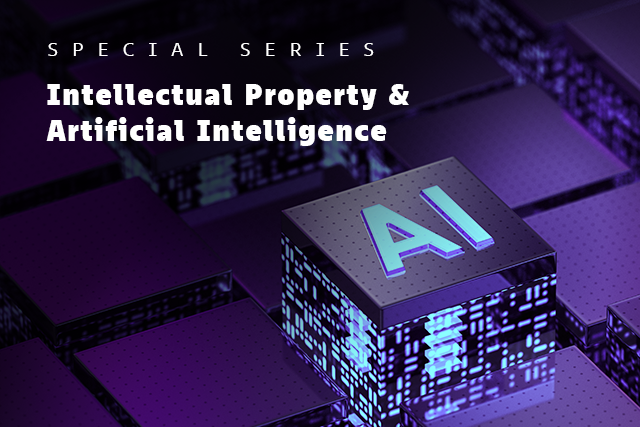

AI use in R&D: risks from an intellectual property perspective
Artificial intelligence tools play a crucial role in research and development processes of many major market sectors. Therefore, it is important to evaluate the possible risks involved in its use
Artificial intelligence (AI) tools have already been incorporated into our everyday lives. Through the collection, processing, and storage of data, they are able to carry out numerous everyday activities and also contribute to major innovations, with an enormous potential to boost technological progress.
Thus, AI is now used across all fields of science and technology in everything from basic engineering to medicine production. In recent years, many industries have ramped up investment in AI technology use, with estimates suggesting that AI tools could generate up to USD 13 trillion for the global economy in the coming years.
AI tools in R&D
AI tools are able to assist with various aspects of innovation management and research and development processes. Features such as deep learning models (where large volumes of data are analyzed to identify patterns and solve problems without human intervention), natural language processing (NLP, a set of techniques that allow AI to understand human language), and computer vision (focused on the analysis of images and videos, emulating human vision) can be used to map out trends, scout new technologies, and design and create tests and products, optimizing processes.
The healthcare sector is one example of an industry where AI tools have significant potential. AI can help automate production processes, clinical applications (such as medical images and surgical robots) and medical diagnosis, including in regard to improving telemedicine.
Moreover, the rapid and simultaneous processing of information stored in large databases can increase the efficiency of pharmaceutical activities, such as production and planning, processes that traditionally can last over a decade and require substantial investment to be concluded.
In principle, AI tools can be applied to all facets of pharmaceutical production, including the discovery and selection of new medication, quality control, the reduction of health risks related to preclinical trials, predicting demand, and managing the supply chain. It is even possible to imagine that the result of specific uses of AI may become patentable.
AI tools and intellectual property
However, a cautious approach to harnessing the potential of using AI in R&D is required to prevent promising results from being compromised by legal issues. One of the main issues concerns the data sources used, as AI platforms are often fed with content protected by third-party rights, such as industrial property rights, image rights, and copyrights.
In Brazil, according to the Copyright Law (Law No. 9,610/1998 – LDA), works available on the internet are subject to the same principles and rules as works that exist in physical form. Any unauthorized use of copyrighted works may therefore have legal consequences, including penalties and criminal sanctions provided for in Article 184 of Brazil’s Criminal Code.
As such, if planning to use a particular publication, source code library or database (which, in Brazil, can be subject to copyright protection) available on the internet, it is advisable to check the terms regarding its public use and whether authorization from the author/owner is necessary. Although the author/owner may provide content under licenses such as Creative Commons, Open Source, or Copyleft, limitations on commercializing or generating derivative works may exist.
Legal disputes and copyright issues
Currently, we highlight three lawsuits discussing the use of copyrighted works in machine learning models – one filed by artists in the United States and two others filed by a company in both the United Kingdom and the United States. According to the plaintiffs, the unauthorized training of AI that uses copyrighted works represents a violation of such rights. Moreover, as part of proposed AI regulations in the European Union (also being discussed in Brazil), there is debate about whether developers of chatbots should publicly disclose the copyrighted material they use, potentially allowing for the possibility of their owners claiming the payment of royalties.
On the opposite side, some argue that using third-party works in these circumstances should be unrestricted, and free of charge. This is generally based on the grounds that either there is no use of the works themselves (rather, they merely serve as ‘inspiration’ for content or style) or on the grounds of the fair use doctrine and copyright law limitations – as the copyrighted works would constitute mere data that the AI would use to generate new content distinct from the original works (transformative use). Thus, they argue this would not be tantamount to collages or reproductions of third-party material.
In any case, it is worth noting that Brazil’s Copyright Law also allows for exceptions to copyright, such as:
- Reproductions of minor excerpts of pre-existing works of any nature or of full works of art (visual arts), provided that reproduction is not the main objective of new works, and it does not jeopardize the ability to exploit the original work or cause undue prejudice to the legitimate interests of its authors;
- The use of copyrighted material in paraphrases or parodies, provided that it does not constitute a reproduction of or discredit the original work; and
- Citations of excerpts of any works for study, criticism, or debate, provided the author’s name and the origin of the works are properly referenced.
Data collection and social media
Another aspect to consider when using AI tools regards the possibility of violations stemming from forms of data collection prohibited by social media platforms’ terms of use. In one significant lawsuit in the United States, a company offering AI-based solutions was sued for collecting publicly available information from a professional social media platform in order to analyze and predict the likelihood of employees changing their jobs. After years of litigation, the courts ruled that extracting data from public profiles violated the platform’s terms of use, and as such, it was an illegal practice.
The considerations mentioned above also apply to the results generated by AI tools. This is because whether by coincidence or due to ‘excessive inspiration’, they may resemble existing creations or inventions and thus violate third-party rights. In Brazil, the mere fact that the outcome was generated by AI (which lacks a legal personality) may not per se be sufficient to excuse any potential unlawful actions.
As access to (and awareness of) AI becomes more widespread, the market is likely to see more players emerge, offering solutions to optimize essential and complex tasks. Therefore, staying aware of new developments is important, as is weighing up AI’s practicality and efficiency against precautions for directly or indirectly avoiding violations of third-party intellectual property rights.
For further information on intellectual property and artificial intelligence, please contact Mattos Filho’s Intellectual Property practice area.






